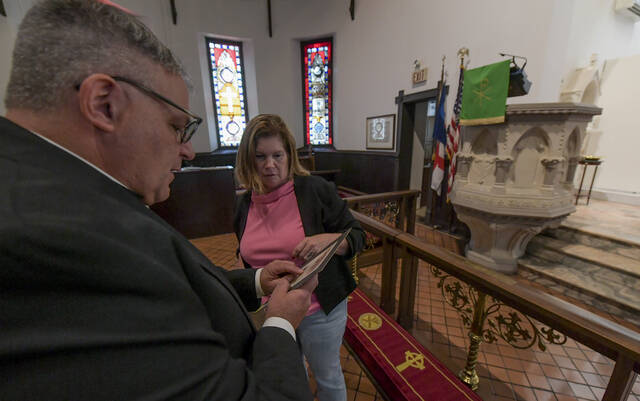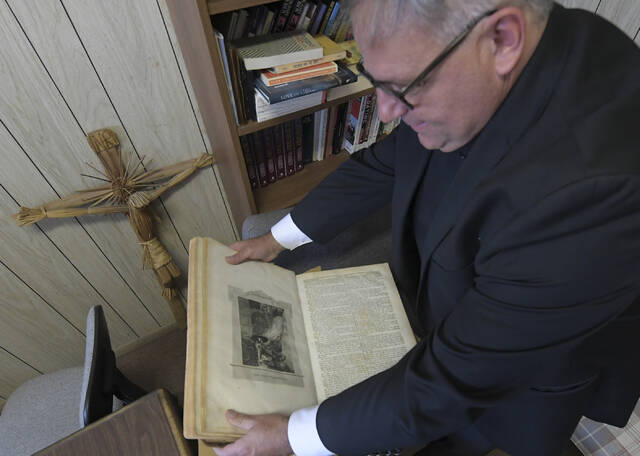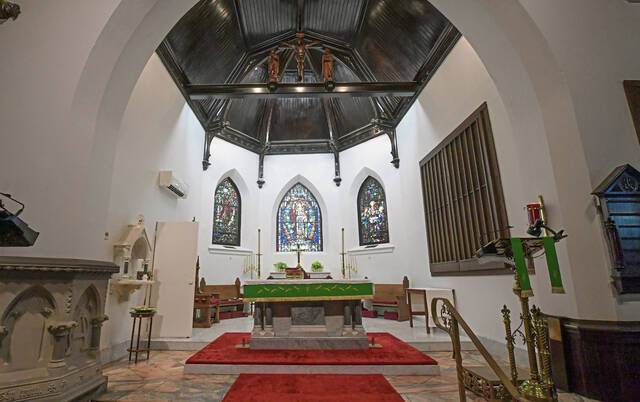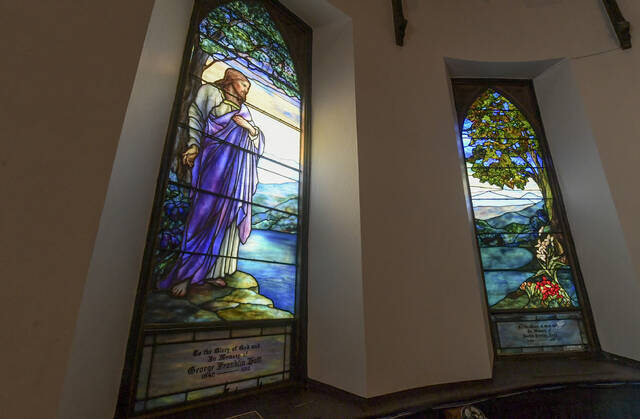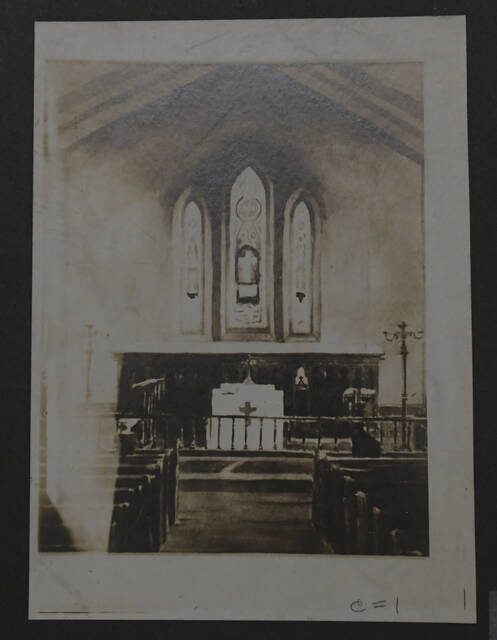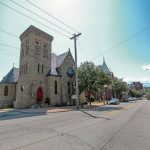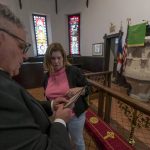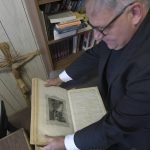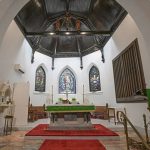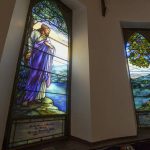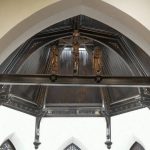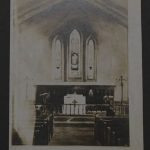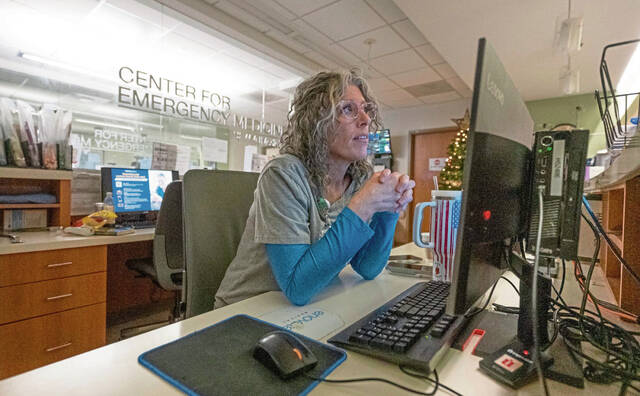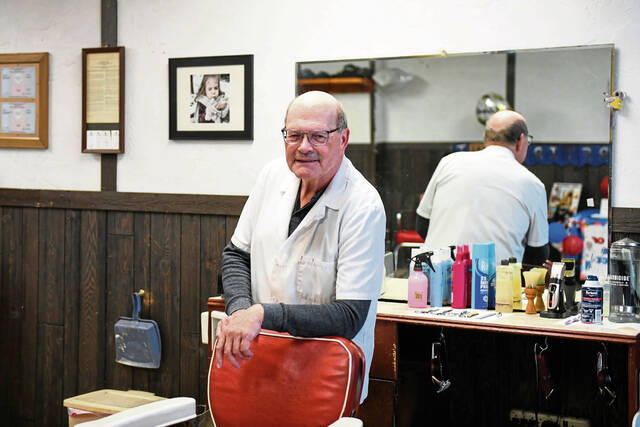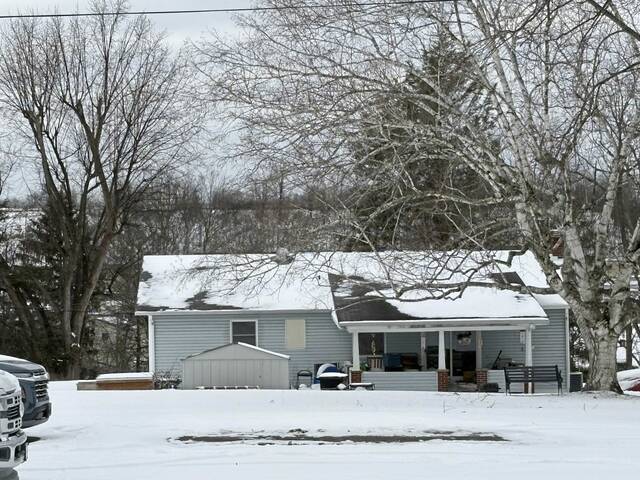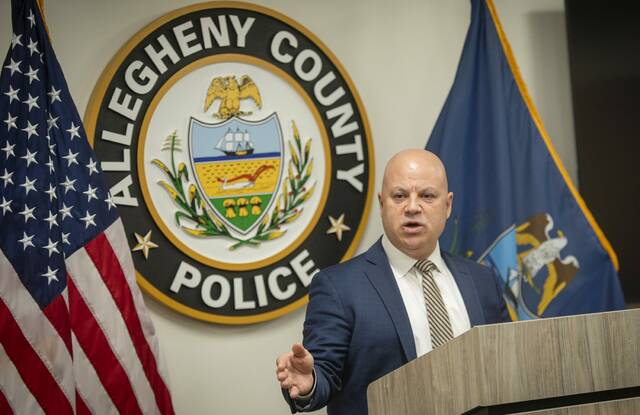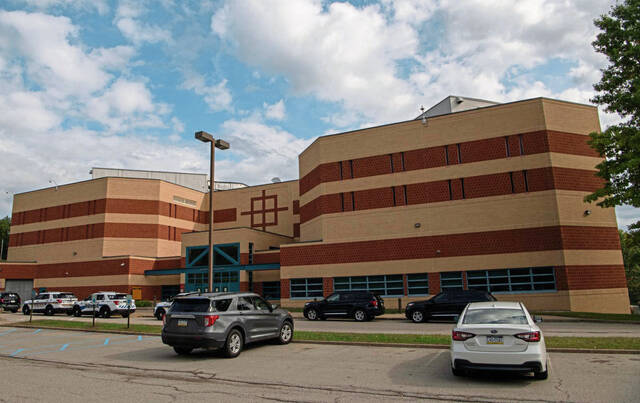Christ’s Church is taking the better part of a year to celebrate its two centuries of worship and community outreach in Greensburg.
The Anglican church’s 200th anniversary jubilee officially began in April, with a dinner for its members. It will kick into high gear in September, with the planned debut of a documentary about the church and a tour offered in conjunction with the Westmoreland Historical Society.
Additional activities will continue through January, when the congregation will mark the bicentennial of its charter on Jan. 31.
“We’re trying to capitalize on our 200th jubilee, to celebrate and to build interest again,” said Holly Ruble, who heads the jubilee committee. “It’s time to bring people back to the church. We want to have a resurgence.”
According to church leaders, the Christ’s Church flock today consists of about 125 families, about half of the membership 50 years ago.
“In the last few years, we’ve seen attrition in our membership. Deaths and people moving are the two No. 1 causes,” said the Rev. Jeff Wylie, Christ’s Church rector.
“The families that founded Greensburg and built the industries in Greensburg were members here, and they still are,” Ruble said.
That includes the Jamison family, which was prominent in the local coal mining industry.
Some of the church’s clergy had equally notable associations. The Rev. Edward Y. Buchanan, who served as rector in 1832 and 1833, was the brother of James Buchanan, later elected U.S. president. The pastor’s wife, Anne Eliza, was a sister of Pittsburgh native and seminal American songwriter Stephen Foster.
MORE ABOUT CHRIST’S CHURCH:
• Christ's Church marks 190 years of worship in GreensburgTradition is an important part of the Christ’s Church story, and it’s what brought Ruble back three years ago, after she returned from three decades of living in Washington, D.C.
“My grandparents were married here, my mother attended church here, and I was baptized here,” she said. “There was tradition that drove it.
“I knew the liturgy. It was what I expected. It was what I had always been taught.”
The church’s Book of Common Prayer hasn’t changed since 1662, Wylie noted.
Changing with the times
But some of the Greensburg congregation’s practices have been altered by the march of time.
Church secretary Marsha Tallant, a member since 1965, cited a Holy Week tradition that was observed until recently. Members would sign up to take a turn praying in the church, to provide a continuous presence of worshipers from the evening Maundy Thursday service through the noon service on Good Friday.
“That continued until just a few years ago, when members of the congregation got too old to be out at night,” she said.
Covid-19 restrictions halted one of the church’s most popular outreach activities: periodic salad bars that were open to the public on the church’s lower level, or undercroft.
“They started out four times a year and worked up to about eight times a year,” Tallant said.
The meals were started by Ruth Herring, Wanda Goulding and Harriet Haile.
Dishes included pineapple upside-down cake, turkey and chicken salads and a salad made with corned beef and gelatin.
Goulding was known for the Boston cream pies she baked.
“She would make tons of them,” said Tallant. “We would take them into Pittsburgh and serve all the people that were in the (Canterbury Place) nursing home.”
The salad bars proved to be popular, attracting as many as 150 diners each time, according to Ruble. “Everybody would come from the courthouse,” she said.
Today’s Christ’s Church is the third building to house the congregation. Services were held in the local Masonic temple while construction was underway from July 1889 to December 1891.
Located on Main Street, at the intersection of Tunnel Street, it occupies the same space as its predecessor, which was constructed in 1851. The congregation’s first church was built on Maple Avenue, near the site of today’s Greensburg YMCA.
Among the architectural highlights contained in the church’s English Gothic sandstone walls are more than 20 stained-glass windows. Many of them depict scenes from the life of Christ.
One of the oldest in that series is the central window in the south transept, which portrays Jesus as the Good Shepherd. Created by New York’s Tiffany Studios, it was installed in 1914 and restored in 1992.
The exterior walls and windows have required cleaning more than once — particularly on the church’s north side, which was coated with soot from coal trains passing along the adjacent railroad tracks.
“We thought the stones in the wall were black,” said Tallant. “Then they cleaned them, and you could see the yellow stone. That was such a big change.”
According to Wylie, Christ’s Church was one of the first local churches to be fitted with air conditioning so windows could remain closed during warm weather, shutting out the dirt and much of the noise from trains.
Still, he said, the roar and whistle of trains can be heard during Sunday morning services.
“About every 20 minutes, you’ll hear one,” he said. “They usually come sometime around the sermon and around the end of the Eucharist prayer and Communion.”
Originally formed as a congregation of The Protestant Episcopal Church of the United States, Christ’s Church was seen as progressive for that time, Wylie said.
“There wasn’t quite as much fire and brimstone,” he said.
The church “caused a huge scandal 100 years ago,” he said. The congregation marked its centennial milestone with a celebration that included dancing, which drew sharp criticism.
“People would be excommunicated from other churches if they would attend it,” he said.
But, now, the church is on the conservative end of the spectrum. Following controversial decisions by U.S. Episcopal leaders to elect an openly gay bishop in New Hampshire and to approve a same-sex marriage liturgy, Christ’s Church joined other congregations in splitting from the Episcopal fold in 2008. It is now affiliated with the Anglican Church of North America.
“It’s not a matter of homophobia, it’s a matter of authority,” Wylie said of the split. “We find things in scripture, and through scripture is how we progress. We don’t find society and try to make it fit into scripture.
“That doesn’t mean we’re any less respectful, any less loving. We accept people from where they are. There’s a difference between accepting somebody and endorsing behavior.”
Jubilee tour, music slated
Christ’s Church is among seven locations on Greensburg’s Main Street that are slated to take part in a self-guided Historic Houses of Worship tour from 10 a.m. to 4 p.m. Sept. 17. The event is being held in partnership with the Westmoreland Historical Society.
For more information or to purchase tickets in advance at a discount, call the society at 724-836-1800, ext. 210. Tickets also will be available at the door at each site.
Other planned jubilee events include:
• An Historical Evening of Music, sometime in October. Musicians in period costumes will perform worship music from throughout the ages.
• A November lecture by Tim Moore, the church’s former senior warden, on the topic “What does it mean to be Anglican?”
• A formal banquet Jan. 28
• A concluding re-creation Jan. 29 of the congregation’s first church service, conducted 200 years earlier.



